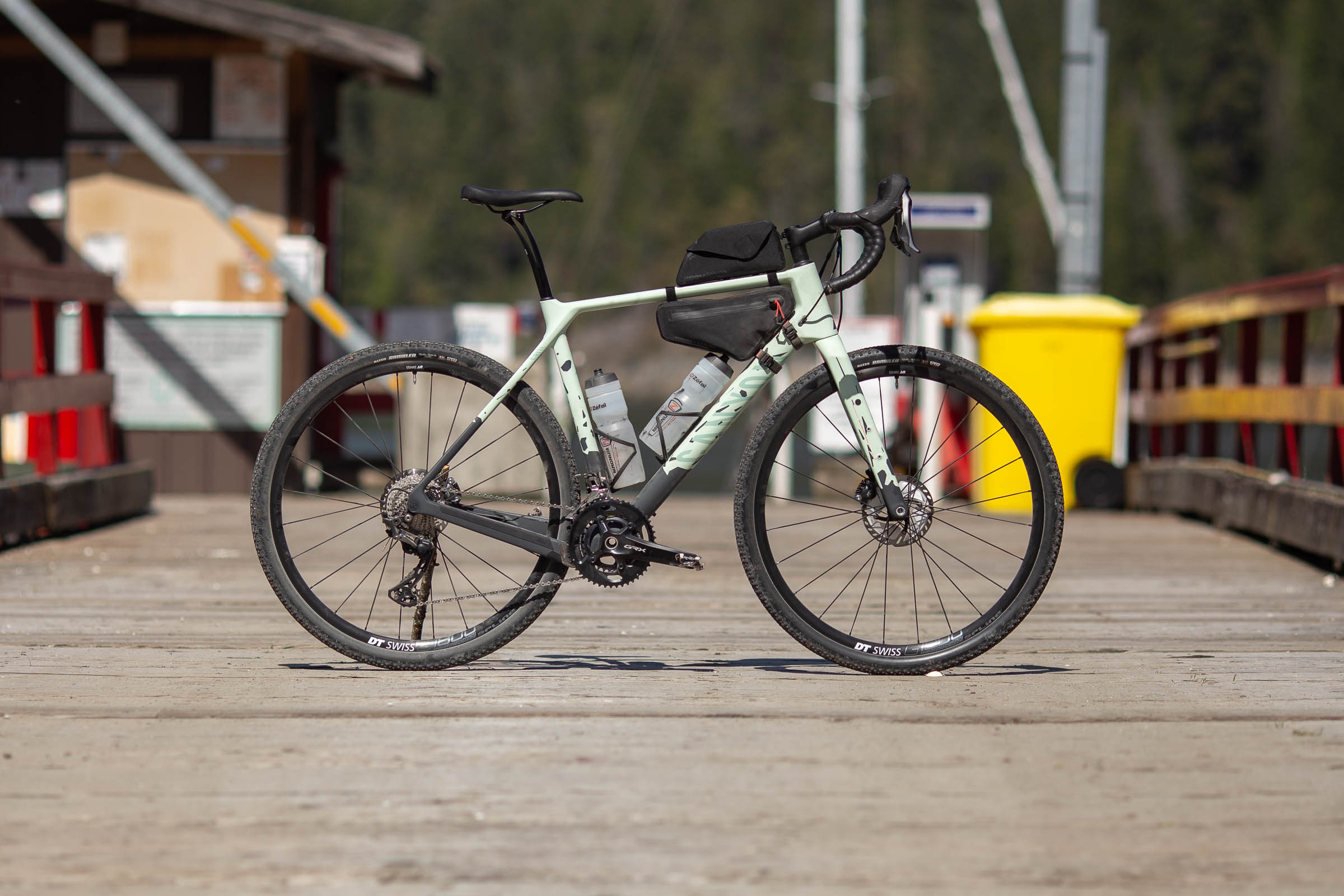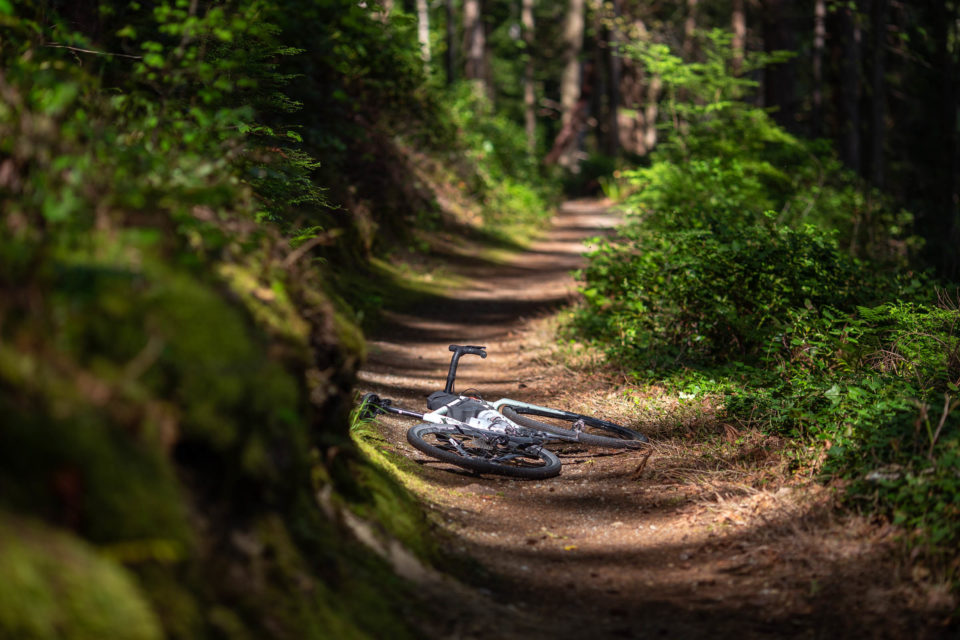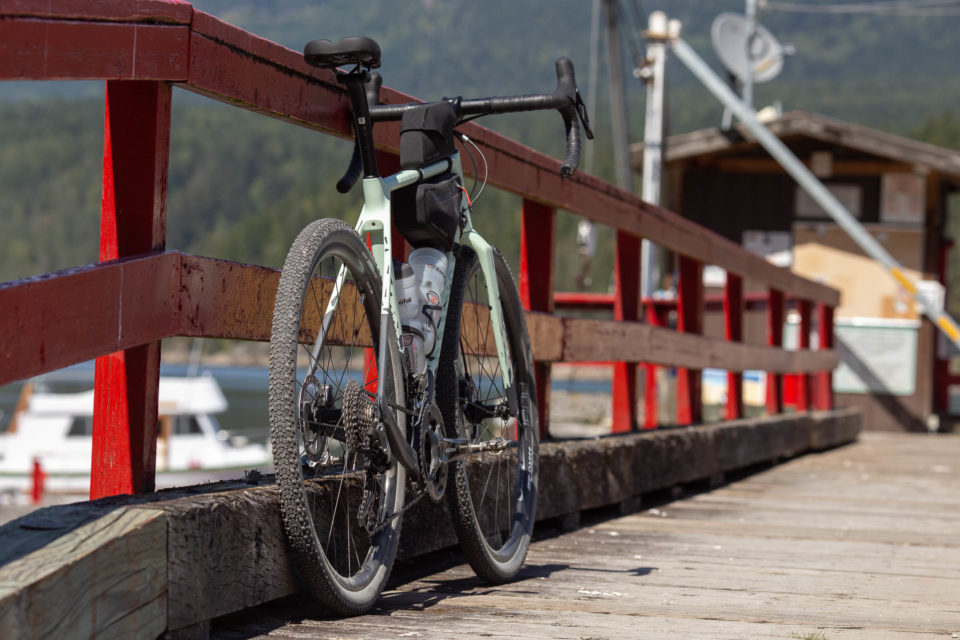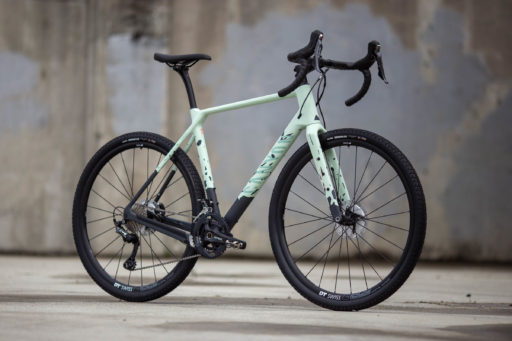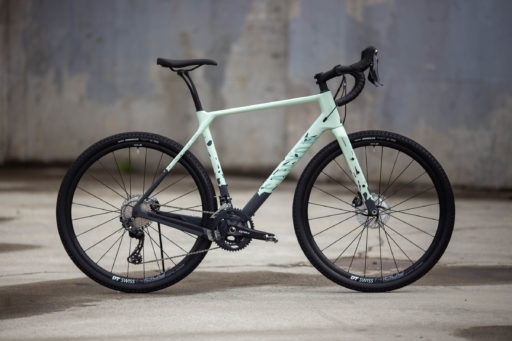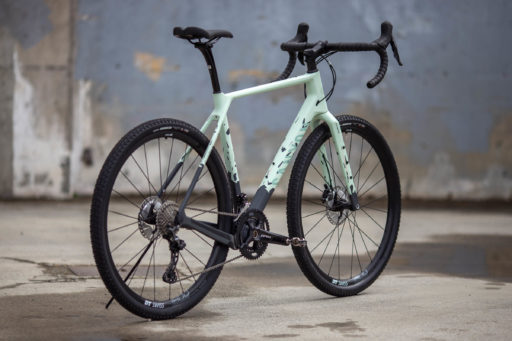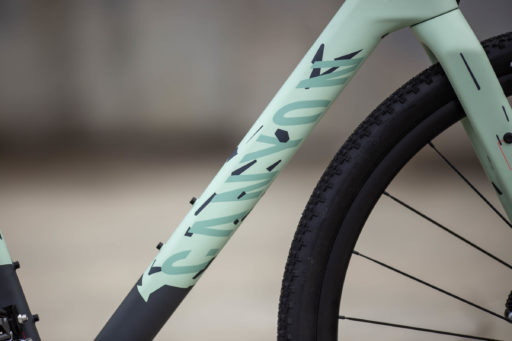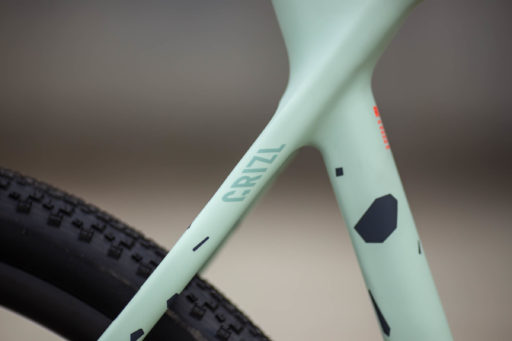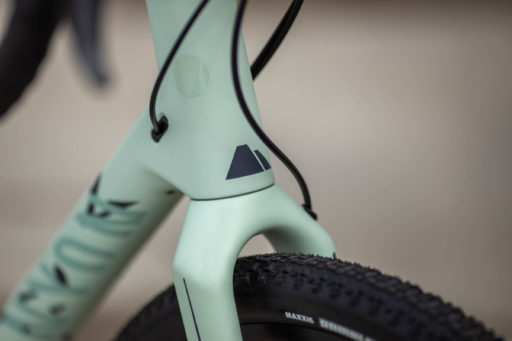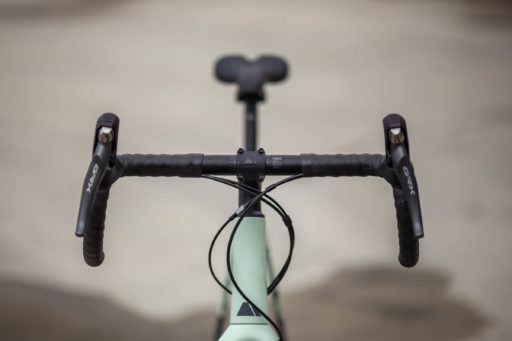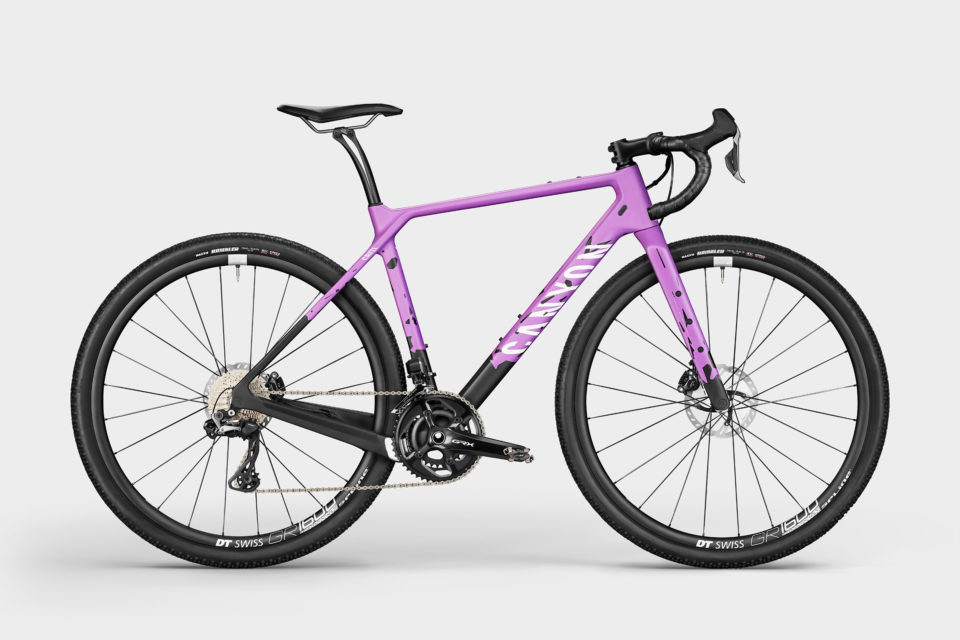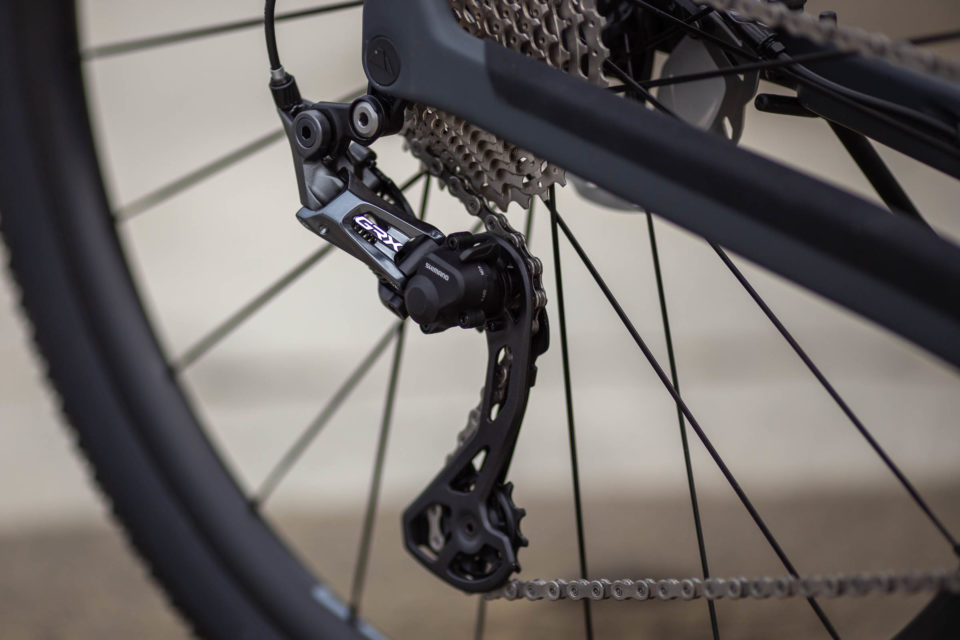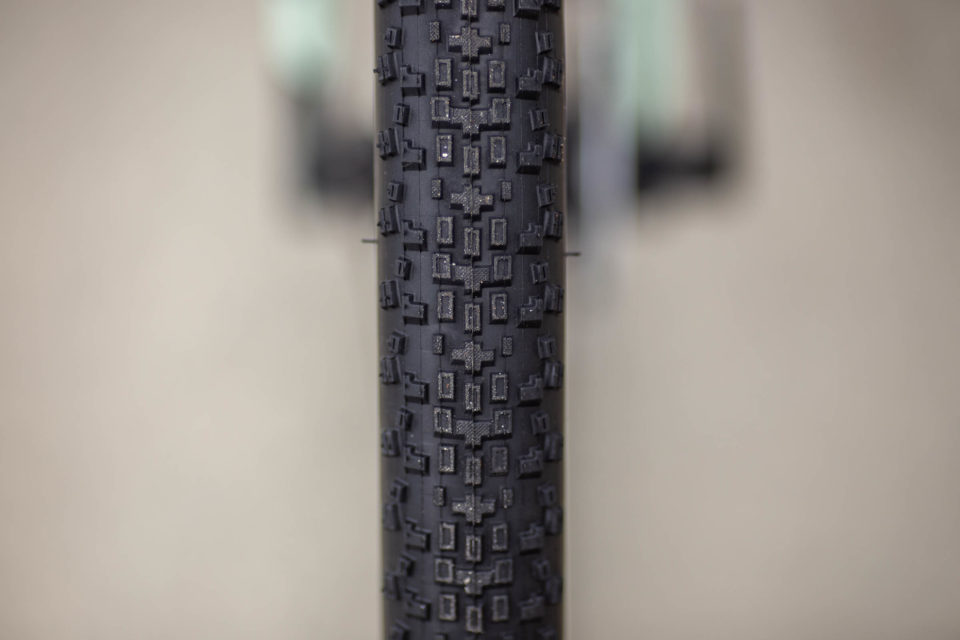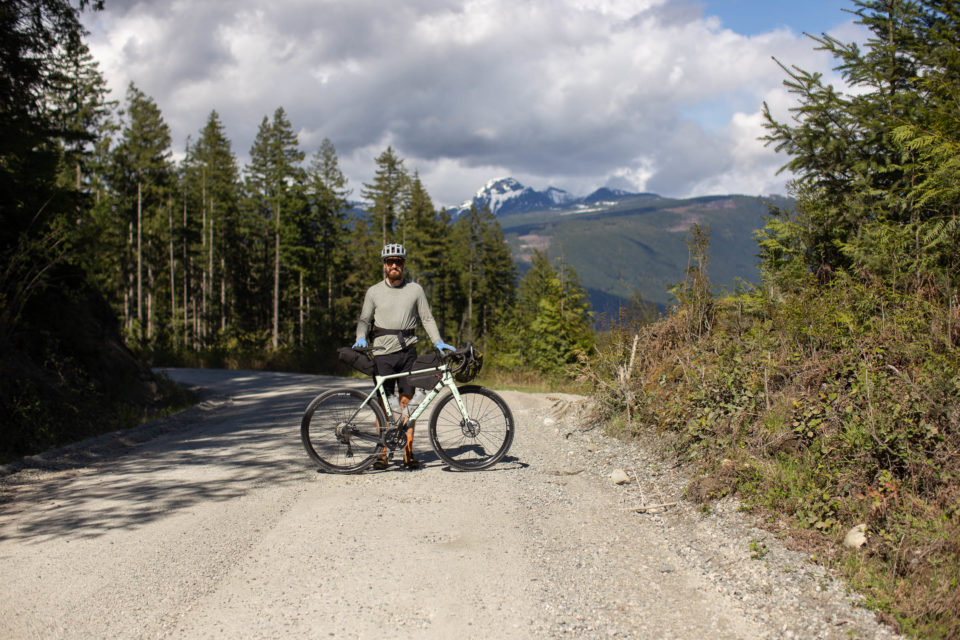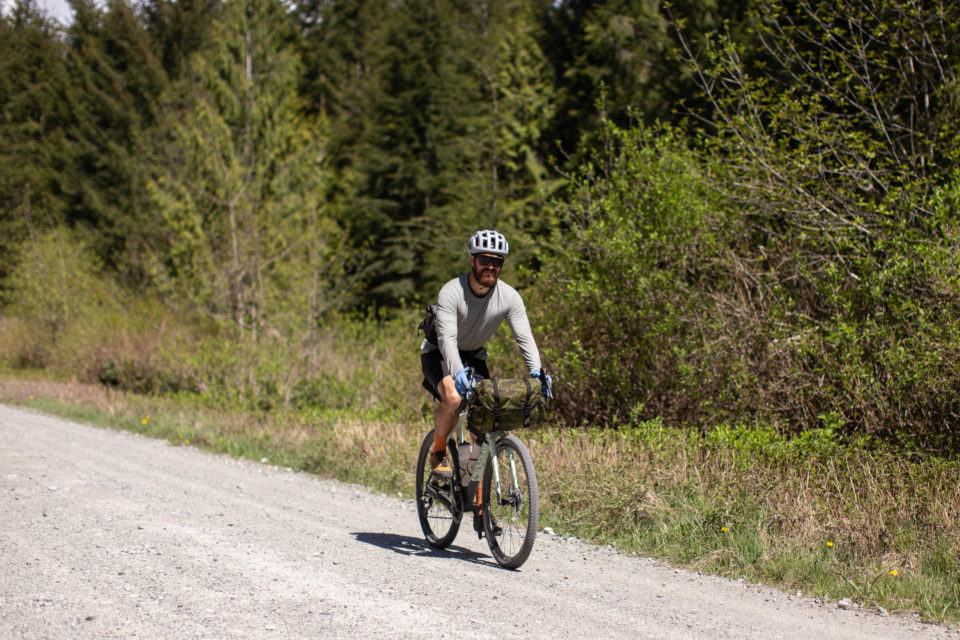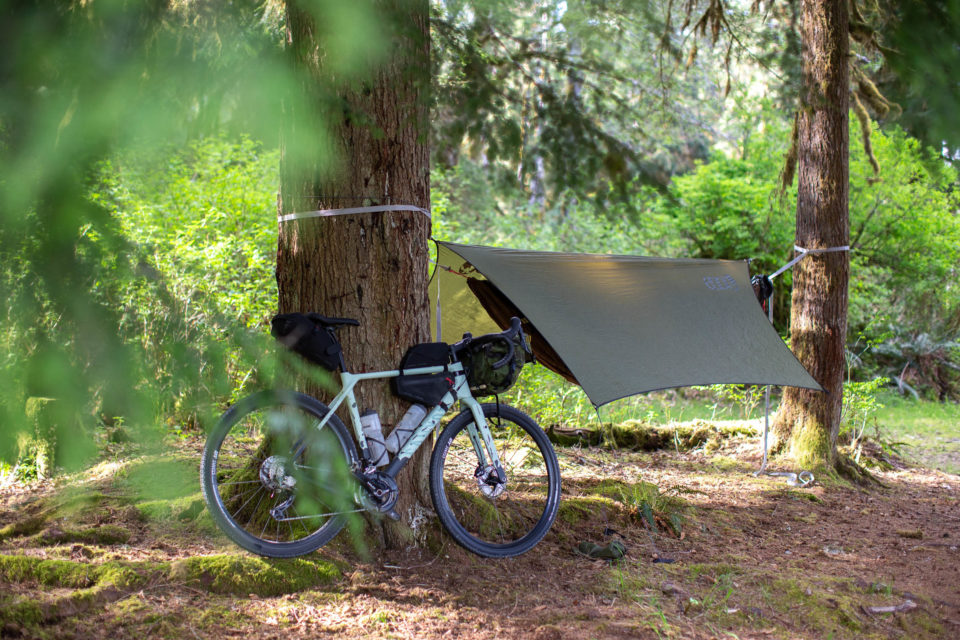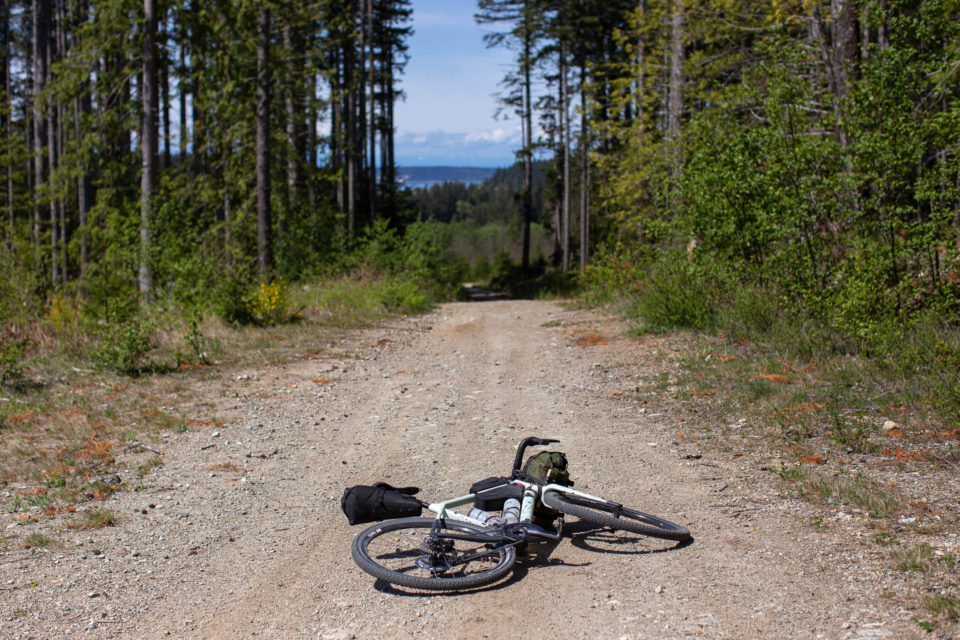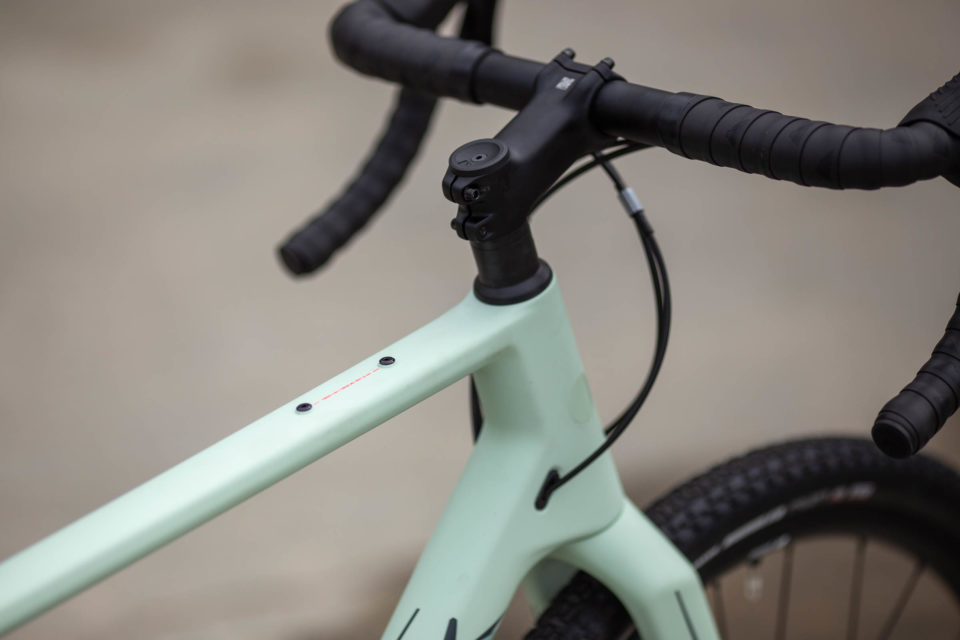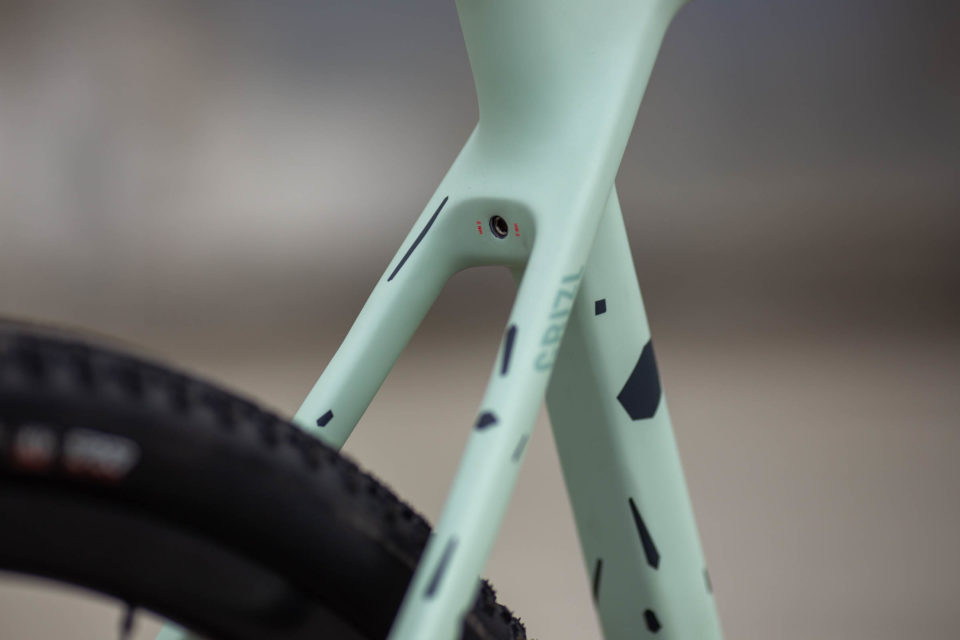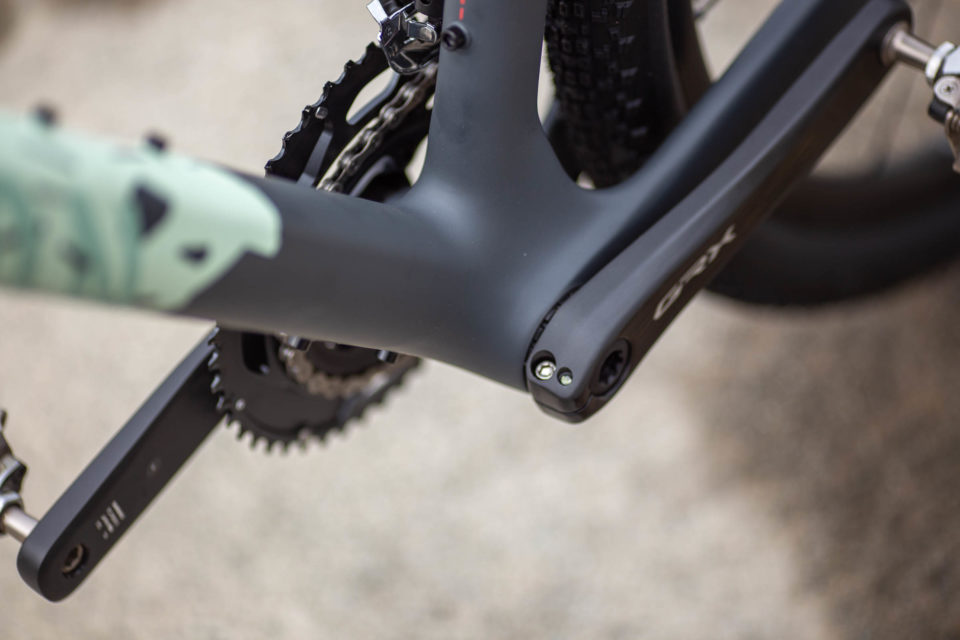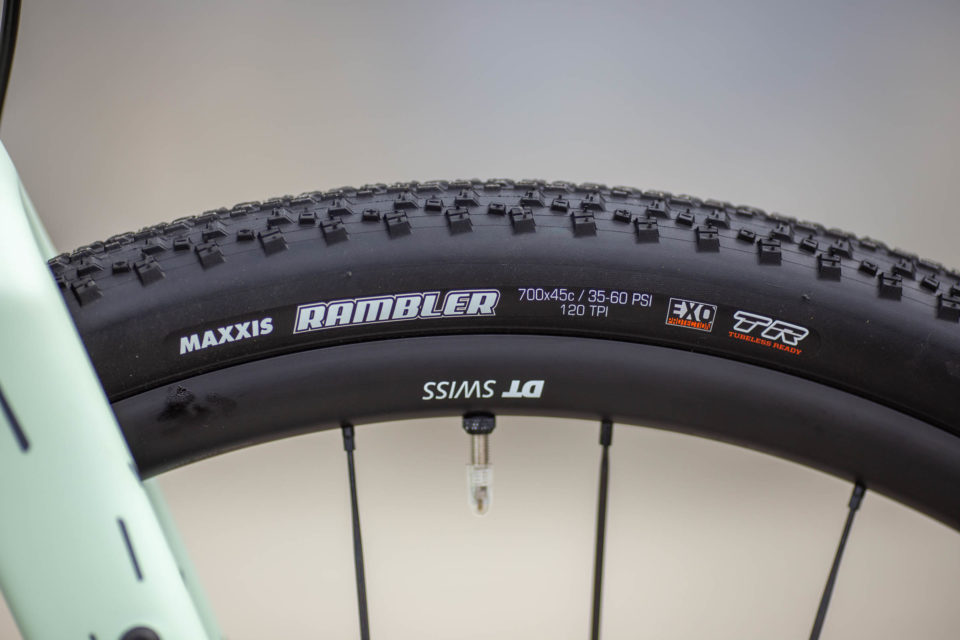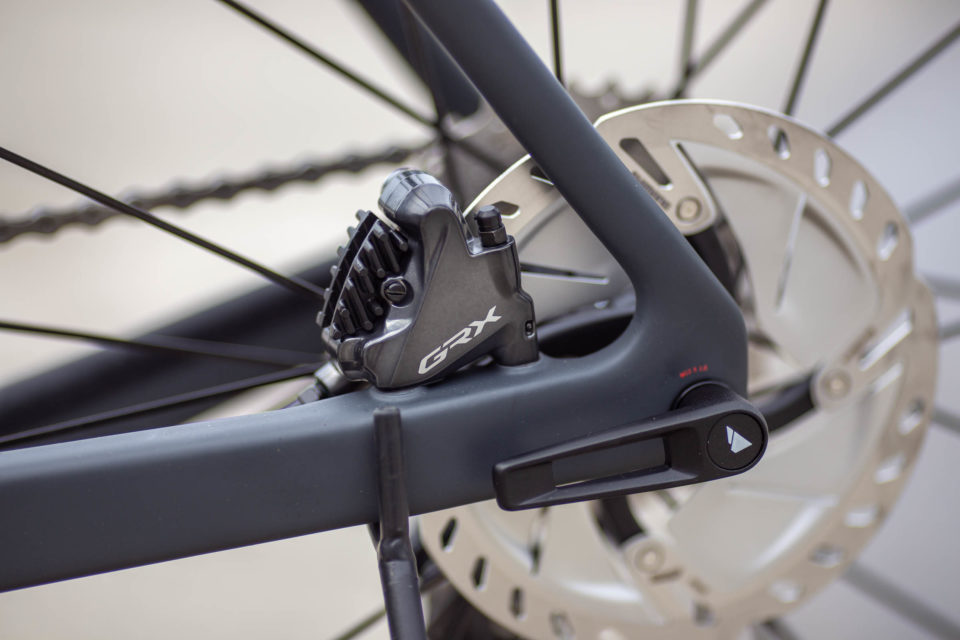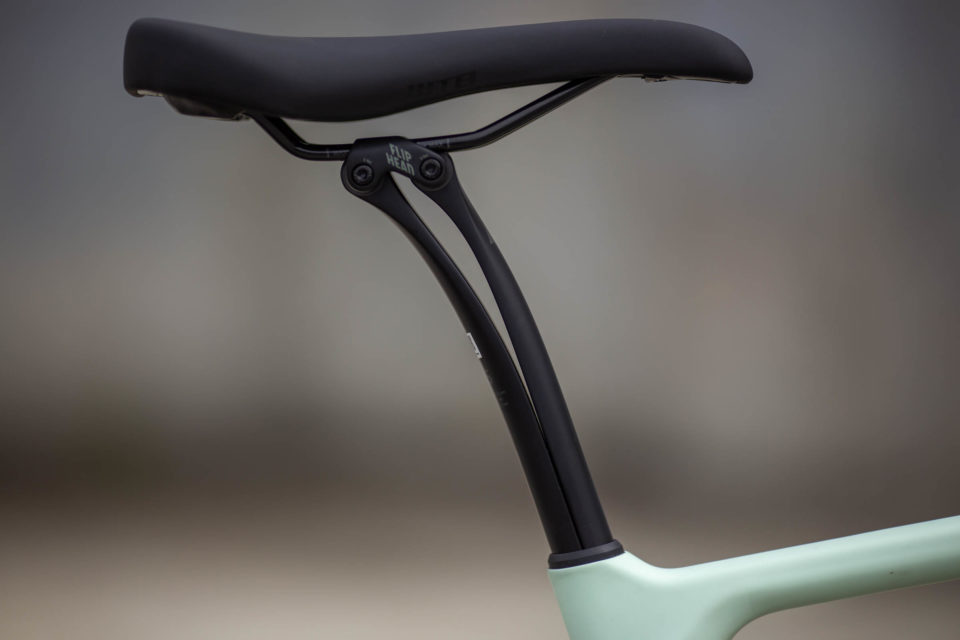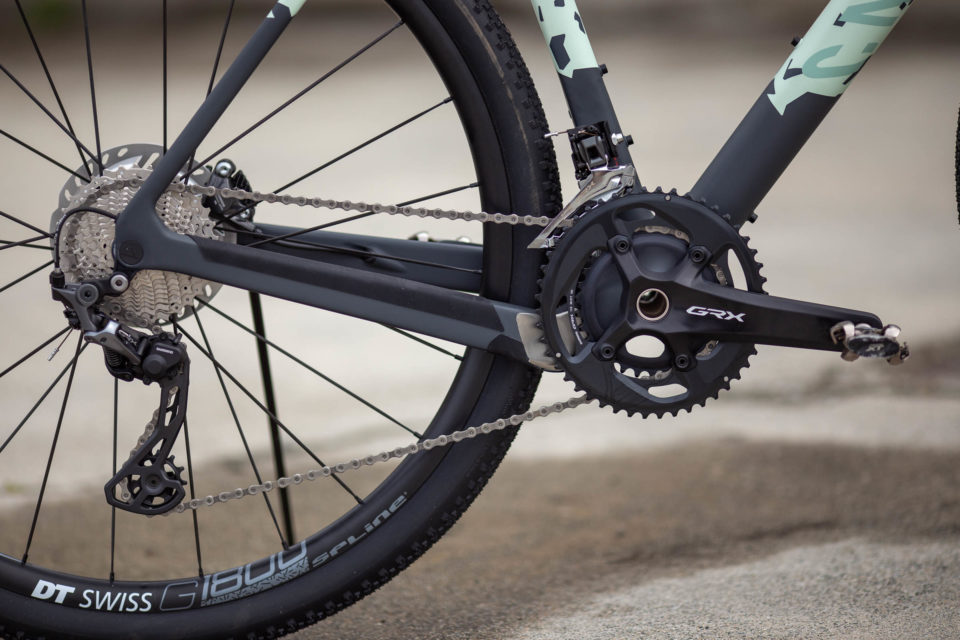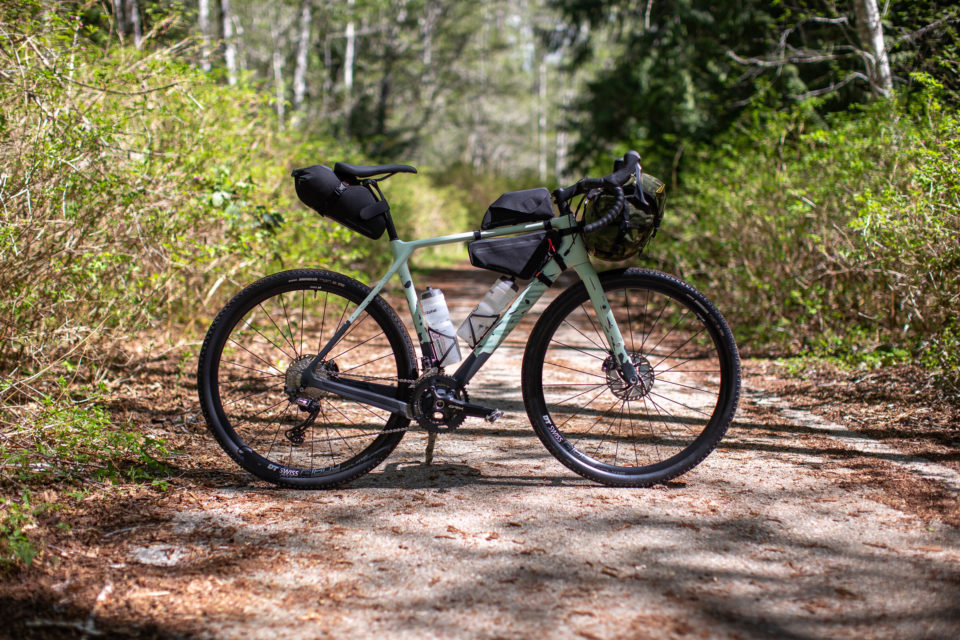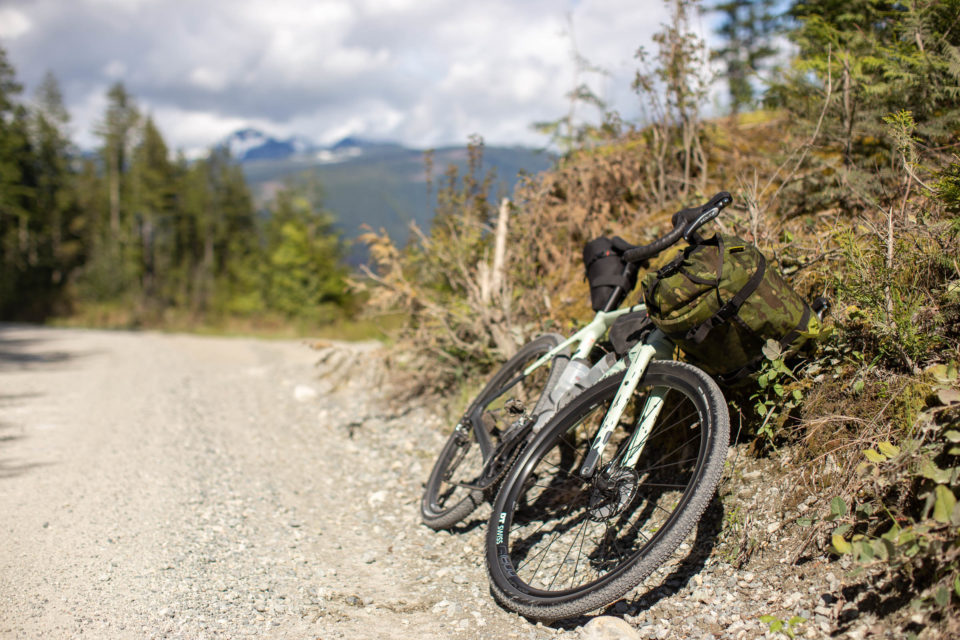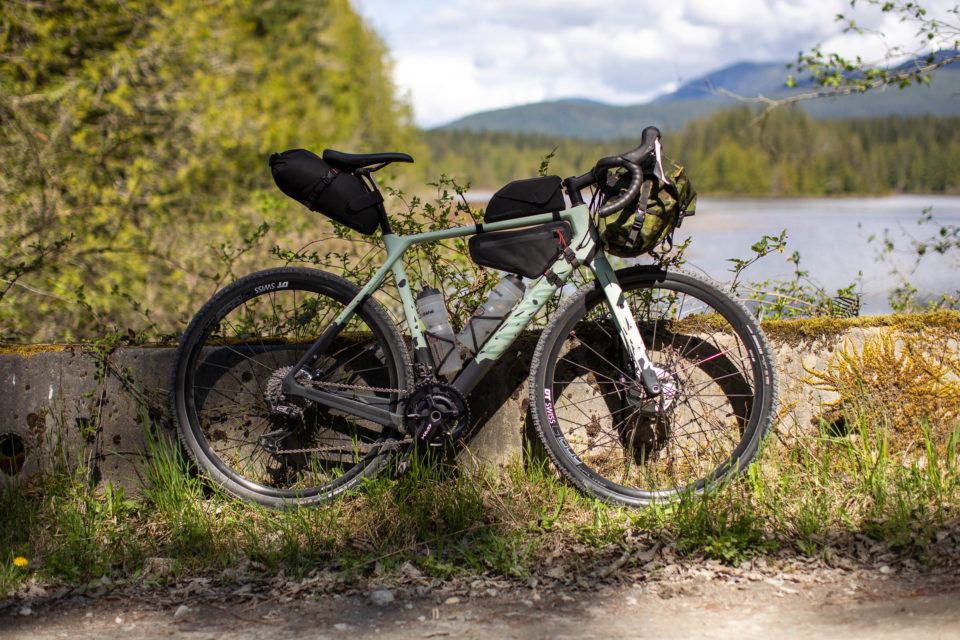Canyon Grizl Review: Gravel Super Bike
Share This
Released today, the Canyon Grizl is a new drop-bar gravel bike with clearance for 700 x 50mm tires, lots of mounting points, and features that cater to long days in the saddle. We’ve been testing out the Grizl CF SL 8 build prior to today’s release—equipped with a set of co-branded Apidura bags—to discover what it does best. Find our review here…
A few weeks ago, a mystery box from Canyon showed up at my front door and I had only a rough idea of what might be inside. In all seriousness, Canyon provided a geometry chart but nothing else, not even a photo, so I wasn’t sure what to expect. This was my first time riding a Canyon, and I was pretty interested to see how their direct-to-consumer business model worked. Plus, considering the weight of the box, I assumed something exciting was inside.
Right away, it was clear that Canyon has the direct-to-consumer model down to a science. The box it shipped in was meticulously packed, complete with assembly tools, friction paste, torque wrenches, and a few extras like spare tubes, a nifty little fabric shopping bag, and manuals. As far as initial impressions and presentation go, I give Canyon a perfect score. It was refreshing to see a lack of plastic packaging used, which they’ve replaced with cardboard, high-density foam, and velcro straps that I’ve since repurposed as spare bag spacers and straps. The Canyon Grizl—the mystery bike inside the box—was ready to ride after a few minor adjustments. The bars were attached, their funky VCLS seatpost was installed, and after a few minor drivetrain and brake tweaks, I was heading out on my first loaded overnighter.
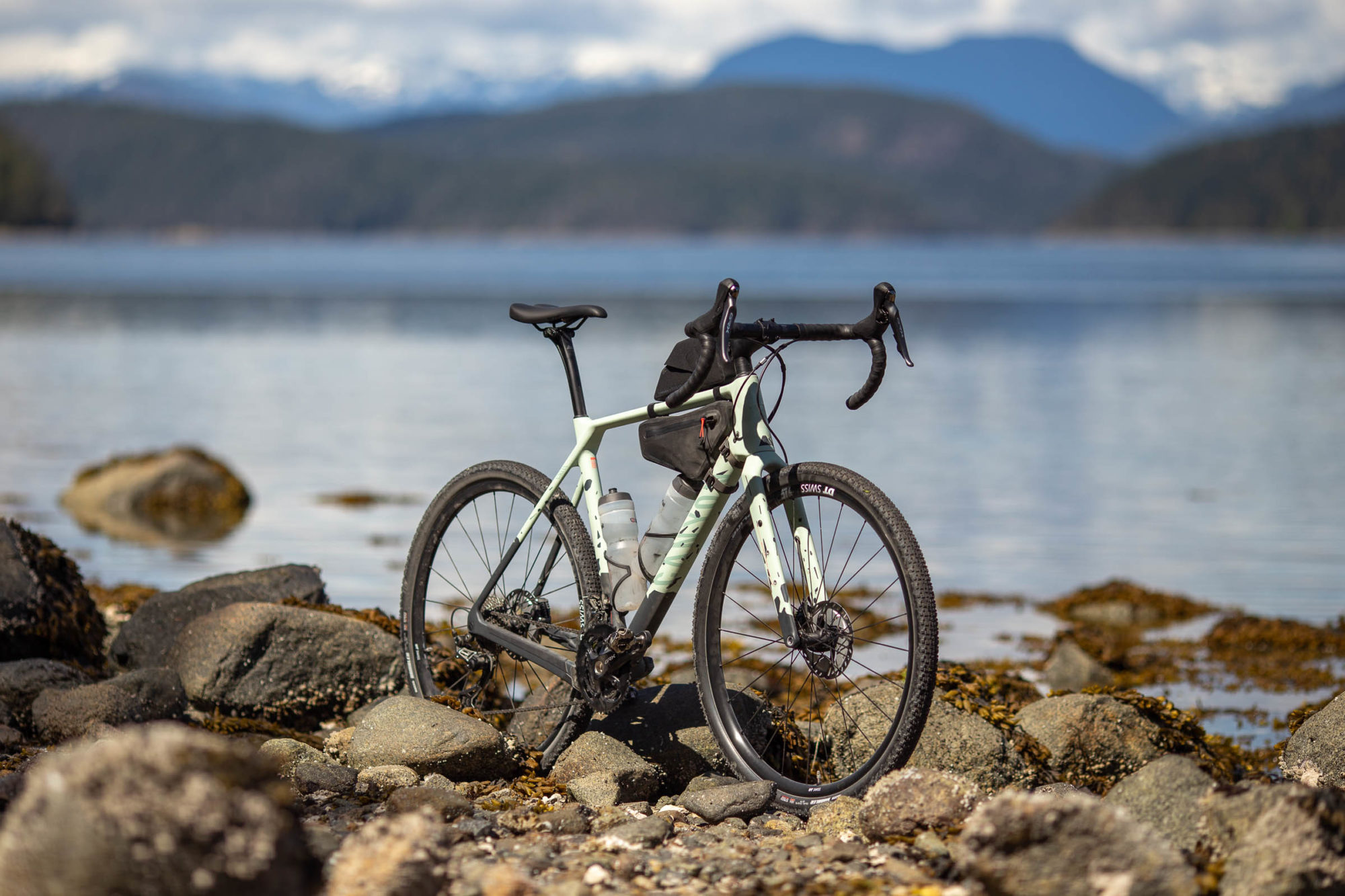
Introducing the Canyon Grizl
I’ll admit, I was expecting something different when the Grizl arrived, especially considering Canyon has some pretty out-there designs, such as their Hover Bar and two-piece carbon seatpost. The Grizl shares more than a few similarities with their flagship gravel bike, the Canyon Grail. Both models in size large have a 72.5° head tube angle, 73.5° seat tube angle, and an overall similar silhouette. Besides a 10mm longer chainstay length, different stack and reach numbers, and a beefier fork, I consider both the Grail and Grizl to be not-so-risky gravel bikes—especially compared to some of the other options on the market these days.
- Highlights
- Frame/fork: Carbon/Carbon
- Angles (L): 72.5° Headtube, 73.5° Seattube
- Stack/Reach: 605mm/409mm
- BB Drop/Chainstay: 75mm/435mm
- Bottom Bracket: Pressfit 86mm
- Hub specs: 12x100mm / 12x142mm, TA
- Seatpost: 27.2mm
- Max tire size: 700 x 50mm
- Price: $2,999 USD
When I asked the Canyon’s design team how the Grizl differs from the Grail and who it’s designed for, they described the two as having similar platforms, with the Grizl being conceived with a more adventurous rider in mind. They were quick to admit that Canyon specializes in “fast and light” and they didn’t want the Grizl to stray too far from that. They expanded on the Grail platform, maintained a road bike feel on pavement, and increased the wheelbase for better traction off road. The Grizl also exceeds standard durability protocols, making it more durable than their other offerings. For example, the fork mounts are co-molded into the layers of carbon, rather than riveted, which they claim is far stronger over the lifespan of the bike. They also carried over some of their favourite tech from their road and gravel lineup, including an integrated seatpost clamp and the two-piece VCLS seatpost. For Canyon, the Grizl embodies a modern gravel bike without going overboard. It can carry gear when you get out on a bikepacking trip, it’s perfectly suited for endurance-style events, and it won’t feel out of place on long day rides or on pavement.
Where the Grizl strays from the Grail is in its ability to handle rough terrain and its overall carrying capacity. The Grizl comes equipped with wider tires, 700 x 45mm versus 40mm, with clearance for up to 50mm, thanks to a dropped drive-side chainstay and 10mm longer chainstays. The Grizl is also kitted out with a few additional mounting options, including the top tube, under the down tube, and for the first time on a Canyon bike, triple pack mounts on the fork legs. It comes with an entirely new fork too, which appears to be beefier than the one specced on the Grail, and is suspension-corrected for those looking to push it a little further. The Grizl features size-specific geometry and build kits, including 650B wheels on the two smallest sizes, three different crank arm lengths, and four bar widths and stem lengths. Canyon offers some of the widest size ranges in the business, and the Grizl follows suit with seven frame sizes ranging from XXS to XXL.
The Grizl comes in six different build kits ranging from $2,199 to $4,899 USD, and four different build-specific paint jobs. Although the majority of the build kits are based around 2x drivetrains and rigid seatposts, the CF SL 7 1BY build is based around a 1×11 drivetrain and a left shifter-actuated dropper post. The Grizl is currently offered in two levels of carbon: CF SL or CF SLX, the latter being approximately 100g lighter and without dropper post compatibility in exchange for Di2 routing through the downtube. It’s worth noting that the North American Grizl comes with a WTB saddle and Maxxis tires, while the European versions have slightly different build kits. There is also a more affordable aluminum version in the works. I was sent the Grizl CF SL 8 build, featuring a Shimano GRX 800 drivetrain, Canyon’s VCLS 2.0 seatpost, and a DT Swiss 1800 wheelset with Maxxis Rambler Tires. The Grizl drops Canyon’s integrated Hover Bar for a standard bar and stem, which makes swapping parts and dialling in the fit that much easier.
Have I mentioned this stellar paint job yet? I’m a big fan of the Matcha Splash colourway on the Grizl I tested, and it’s offered in three other equally satisfying colours: Wildberry Splatter, Olive Sky, and Grape Explosion. They also incorporated some clever labeling on the frame near the mounting points to show bolt specs, proper torque values, and load limits. At first glance it just looks like part of the bike’s design, which I thought was pretty clever.
Geometry & First Impressions
The Grizl I tested is pleasantly lightweight. At just 20.6 pounds (9.3kg), it’s right on track with other carbon gravel bikes and pairs well with Canyon’s performance-first design philosophy. Although Canyon says the Grizl strays the furthest away from their usual performance-focused philosophy, it’s still a performance gravel bike at heart, and that was immediately noticeable. As promised by Canyon, it feels quite natural on pavement, thanks to its steep head tube angle and long reach, and has a snappy, responsive front end that will feel familiar to anyone with a road riding background. I found my position on the bike to be somewhat aggressive. Even though it comes with a shorter stem and wider bar than their more road-oriented bikes, it’s still longer and lower than what I normally ride. The stack and reach on the Grizl fall right in between their race bike, the Ultimate, and long-distance Endurance road bike. So, is the Grizl still a performance gravel bike? Definitely.
Although my initial impressions had me thinking the Grizl was more of a road bike, it shows its true colours once it hits gravel. Without being overly dramatic, the Grizl is hands down one the smoothest riding drop bar bikes I’ve ridden. Sure, the high-quality carbon frame and fork help dampen a lot of the vibrations from the road, but I think their funny looking two-piece VCLS seatpost and floating clamp have a lot to do with how well it handles on gravel roads. The carbon VCLS seatpost’s flexible design is incredibly compliant, soft enough to flex by hand, in fact, and the added comfort is noticeable while riding rutted-out roads and rough gravel. On my first few rides, I kept peeking back at my rear tire to make sure I didn’t have a flat—it was that obvious. What this means is that you can stay seated more often, keep up a proper cadence, and—forgive me—go faster.
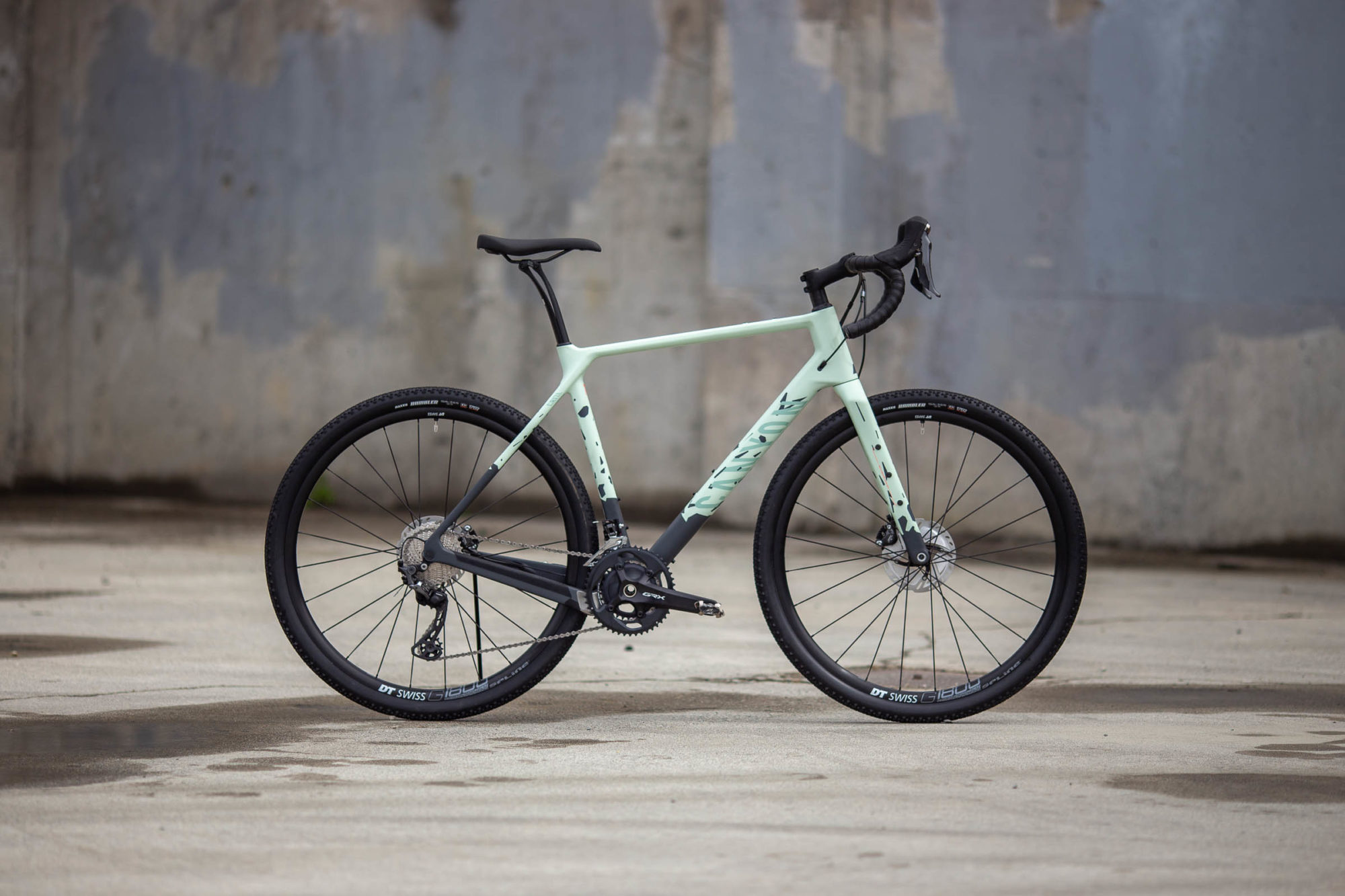
To make room for the larger tire clearance, the Grizl has longer chainstays (435mm) and a dropped drive-side chainstay, while still leaving room for both 1x and 2x drivetrains. The 40mm longer wheelbase, when compared to their Endurance road bike, means added stability while riding loaded. Although the Grail and Grizl have the same head tube angle, the Grizl has a longer fork trail measurement that positions the front wheel’s contact point further in front of the steering axis. This means some front-end steering and agility is lost in exchange for better tracking and stability. Overall, the bike felt balanced and had no problems maintaining traction, loaded or unloaded, on loose gravel roads and doubletrack.
Canyon Grizl Build Kit
The entire North American Canyon Grizl lineup is based around a carbon frame and fork, Shimano’s gravel-friendly GRX drivetrain, hydraulic brakes, DT Swiss wheels, and Maxxis Rambler 700 x 45mm tires. Beyond different levels of components between the models, there aren’t any surprises to speak of. The only real outlier is the Grizl CF SL 7 1BY build, which is the only one to come with 1×11 drivetrain and a dropper post—an option exclusive to the North American market, interestingly enough.
The Grizl CF SL 8 build I tested is on the higher end of their 2021 lineup, sitting right below the Di2-equipped CF SLX 8 build. It comes with a wonderful assortment of components, many of which are designed specifically with gravel in mind. This was my first time using the Shimano GRX 800 drivetrain, which is snappy, robust, and comfortable. Frankly, it’s one of the best drop bar drivetrains I’ve used to date, and helped alleviate some of the fit issues I had, since the hoods and shifters felt so nice. The 11-34T cassette and 48/31T crankset was great for the majority of terrain I encountered, including high-speed descents on gravel and pavement. I found myself wishing for lower gears on steep, long climbs where I was used to spinning up with a higher cadence—this was particularly noticeable when the Grizl was loaded up with gear. The DT Swiss G 1800 Spline wheels offer great value for a gravel wheelset, and use a steel freehub body and axle for durability.
Canyon Grizl CF SL 8 Build Kit
- Frame Canyon Grizl CF SL, Matcha Splash
- Fork Canyon FK0087 CF Disc
- Headset Canyon Acros
- Bottom Bracket Token Ninja Lite BB4124, Pressfit 86mm
- Crankset Shimano GRX 810, 48/31T
- Shifter Shimano GRX 800, 11-Speed
- Derailleur Shimano GRX 810
- Cassette Shimano Ultegra HG800, 11-34T
- Chain Shimano HG701, 11-Speed
- Brakes Shimano GRX 810, Hydraulic Disc
- Brake Rotors Shimano Ultegra RT800 160mm
- Wheels DT Swiss G 1800 Spline DB 25
- Front Hub DT Swiss 370, 12x100mm
- Rear Hub DT Swiss 370, 12x142mm
- Tires Maxxis Rambler SilkShield 700 x 45mm, Tubeless Ready
- Handlebar Canyon HB 0050 Ergobar AL
- Handlebar Tape Canyon Ergospeed Gel
- Stem Canyon Stem V13, 90mm
- Seatpost Canyon S15 VCLS 2.0 CF, 27.2mm
- Saddle WTB Volt Medium 265 steel
- Extras Spare Tubes, Assembly Tools, Spare Seatpost Screw
The size large I tested came with 440mm bars, which felt natural for this type of bike, and a 90mm stem that I’d need to swap to something shorter if I was planning to spend more time on it. Canyon sent me a 70mm stem to try out, and although it didn’t show up in time for this review, I predict it would have made a noticeable difference in comfort. Canyon uses a 1 ¼” steerer on their forks, so compatible stems and spacers are somewhat limited. When I asked Canyon about the reasoning behind this spec, they claimed it provides a stiffer front end and it’s what they know, which falls in line with their mission not to stray too far away from their core values. There are also products from Zipp and Enve that are compatible with 1 ¼” steerers, and although there are no suspension forks at this time, the crew at Canyon suspects that will change soon.

Canyon x Apidura Collaboration Bags
Canyon’s inspiration behind the Apidura collaboration bags was to offer a set of bags that could be used every day, not just for the occasional bikepacking trip. The bags are a combination of Apidura’s Race and Backcountry line, designed to be lightweight, rugged, and completely waterproof. The range includes a 5L saddle bag, two sizes of frame bags (2.4L and 4L), and a 1L bolt-on top tube bag. All of the bags are made from a proprietary fabric from Apidura, featuring a waterproof, welded construction. The saddle bag has an integrated compression vent to make packing easier, as well as multiple attachment points for a rear light or a dreaded danglemug. The frame bag has a main zippered compartment with internal velcro lash tabs and a non drive-side pocket for smaller items.
Overall, the svelte size of the bags make sense for what Canyon is going for with the Grizl. If you’re looking for a set of everyday bags or something to accompany a larger handlebar bag while bikepacking, like I did with the BXB Piccolo Short Flap, they fit the bill. The wedge-style frame bag is easiest to fit throughout different frame sizes, and is less likely to rub on your knees, so although there is room for a larger half frame bag or a massive full frame, it’s a more versatile option. The only complaint I have is related to the zippers, which aren’t smooth and didn’t align with the German-engineered, lightweight carbon vibe of the Grizl.
While Out Grizlin’
Although I’ve only had the Grizl for a few weeks prior to today’s release, I made it my mission to log as much time on it as I could. That included a couple of fully loaded overnighters, a handful of long gravel rides, and plenty of zipping around town. After my first overnighter, it became clear that the Grizl is better suited for a lightly loaded setup than hauling a bunch of gear. I think my large BXB Piccolo bag, with no gear attached to the fork mounts, was about as much weight as I’d want positioned over the front end. I believe this can be attributed to the steep head tube angle, and long/low front end. The steering felt a touch sluggish, and it lost that lightweight, fun gravel bike feel immediately. The bike as a whole, however, handled the extra weight well, and it was just as smooth and powerful feeling loaded up with bags as it was with nothing attached. I could see the Grizl making a perfect bikepacking rig for anyone comfortable with packing only the essentials, sticking to warmer climates, or for those who prefer to mix an Airbnb or motel room into their itinerary.
The one characteristic that didn’t waiver, no matter the conditions or what I was carrying, was just how smooth the Grizl was. The bone-shaking gravel roads outside of town were no match for the Grizl’s smooth-riding carbon frame and fork, and left little to be desired from an overall comfort standpoint (besides the long stem). As I mentioned earlier, Canyon’s two piece VCLS 2.0 seatpost is an absolute game changer for seated comfort on rough roads, even if it pains me to admit it. The extra compliance and forgiveness it offers make sense for a somewhat aggressive gravel bike like the Grizl and encouraged me to ride faster and further than other bikes I’ve ridden in the same realm.
There were a few quirks, mostly related to that dreamy seatpost, that don’t quite fit the bill from a bikepacking perspective. First, imagining dirt and other grime getting in between the two carbon pieces made me cringe. The other thing is that the tilt of the saddle can only be adjusted by removing the seatpost from the frame completely, and then reinstalling, which should really be done using a torque wrench. Where this gets even more complicated is that the flex of the VCLS seatpost is optimized for the weight of the rider, but adding weight (e.g. a saddle bag) affects how it flexes underneath the rider. I asked Canyon about this, and they said you might notice some flex at around 11lbs (5kg) of additional weight, which means you might need to remove your seatpost and adjust your saddle angle in response to that.
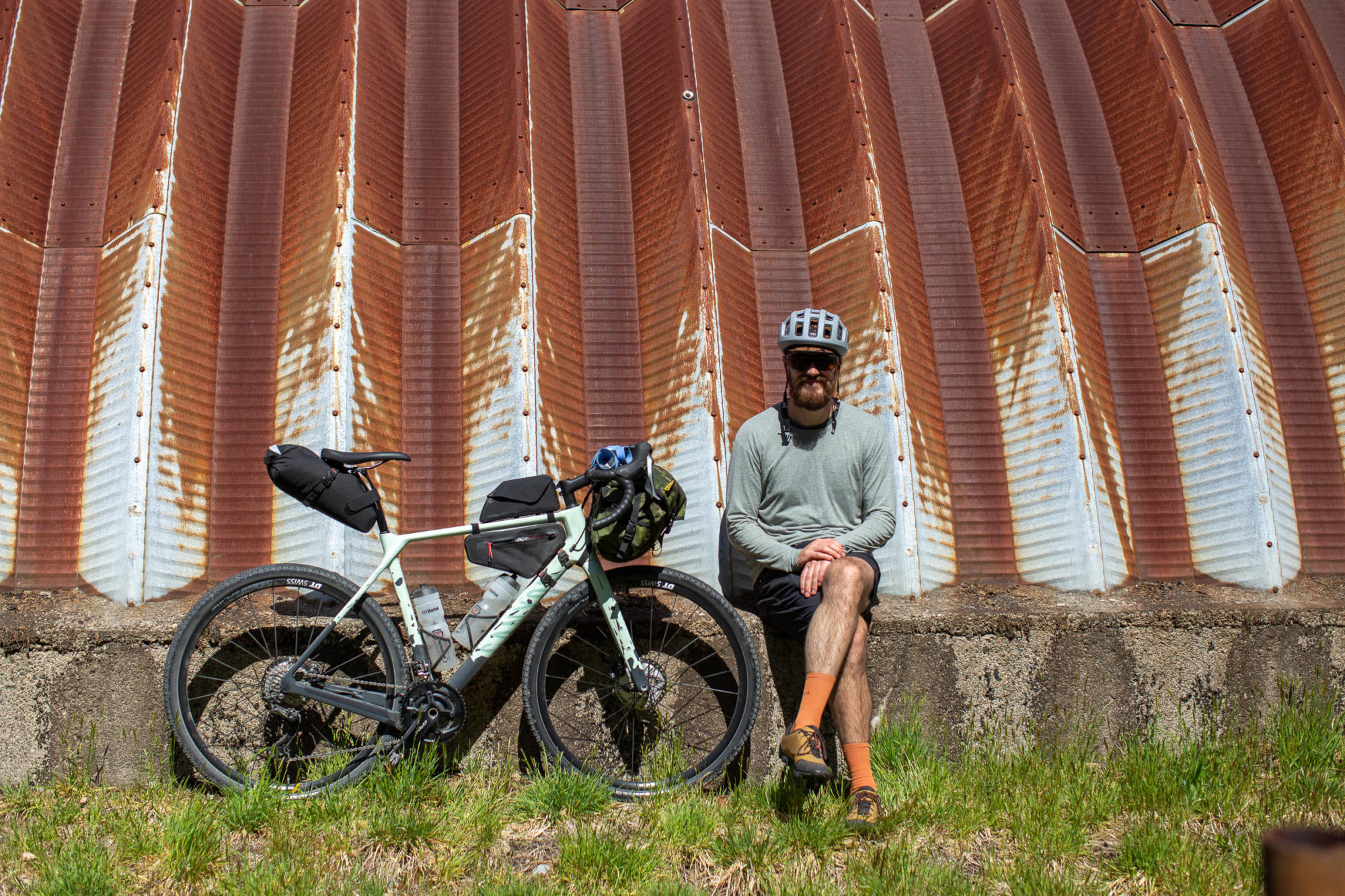
So, what does this all mean? I think Canyon deserves a high five for not over exaggerating what the Grizl is designed for. Both the bike’s design and Canyon’s marketing—free of lofty claims—align with my real-world experience. That’s not to say it isn’t a high-performing, versatile gravel bike, because it certainly is. But instead of diving straight into the monstercross scene, Canyon simply took the popular Grail platform and pumped it up a little, sticking to what they know.
Pros
- Impressively smooth thanks to high-quality carbon and VCLS seatpost
- Lightweight and fast
- Fork mounts, downtube mounts, and lots of frame bag space
- Apidura collab bags are a nice touch
- Huge size range from XXS to XXL
Cons
- Low stack and long reach won’t be for everyone
- Gearing optimized for speed, not great for loaded climbs
- 1 ¼” steerer
- Model / Size Tested: Canyon Grizl CF SL 8 (Size Large)
- Actual Weight: 20.6 pounds (9.3kg) with XT pedals
- Place of Manufacture: Taiwan
- Price: $2,999 USD
- Manufacturer’s Details: Canyon.com
Wrap Up
Truth be told, I was hoping that the mystery Canyon was going to be a drop-bar mountain bike of some kind, or at least throw some kind of design curveball that would have me questioning the existence of gravel all together. Instead, Canyon stuck with what they knew and built upon their existing gravel platform. As I mentioned in my review, I can appreciate Canyon sticking with what they know, which in this case is a performance gravel bike with a little something extra. The added tire clearance and mounting points increase capability over the Grail, and the finished product is smooth and powerful.
Although the Grizl wouldn’t necessarily be my first recommendation to someone looking for their first drop-bar gravel bike, I believe that riders who prefer drop bars or who come from a road background might find the Grizl to be a perfect, high-speed gravel rig for events such as Unbound Gravel or The Mid South.
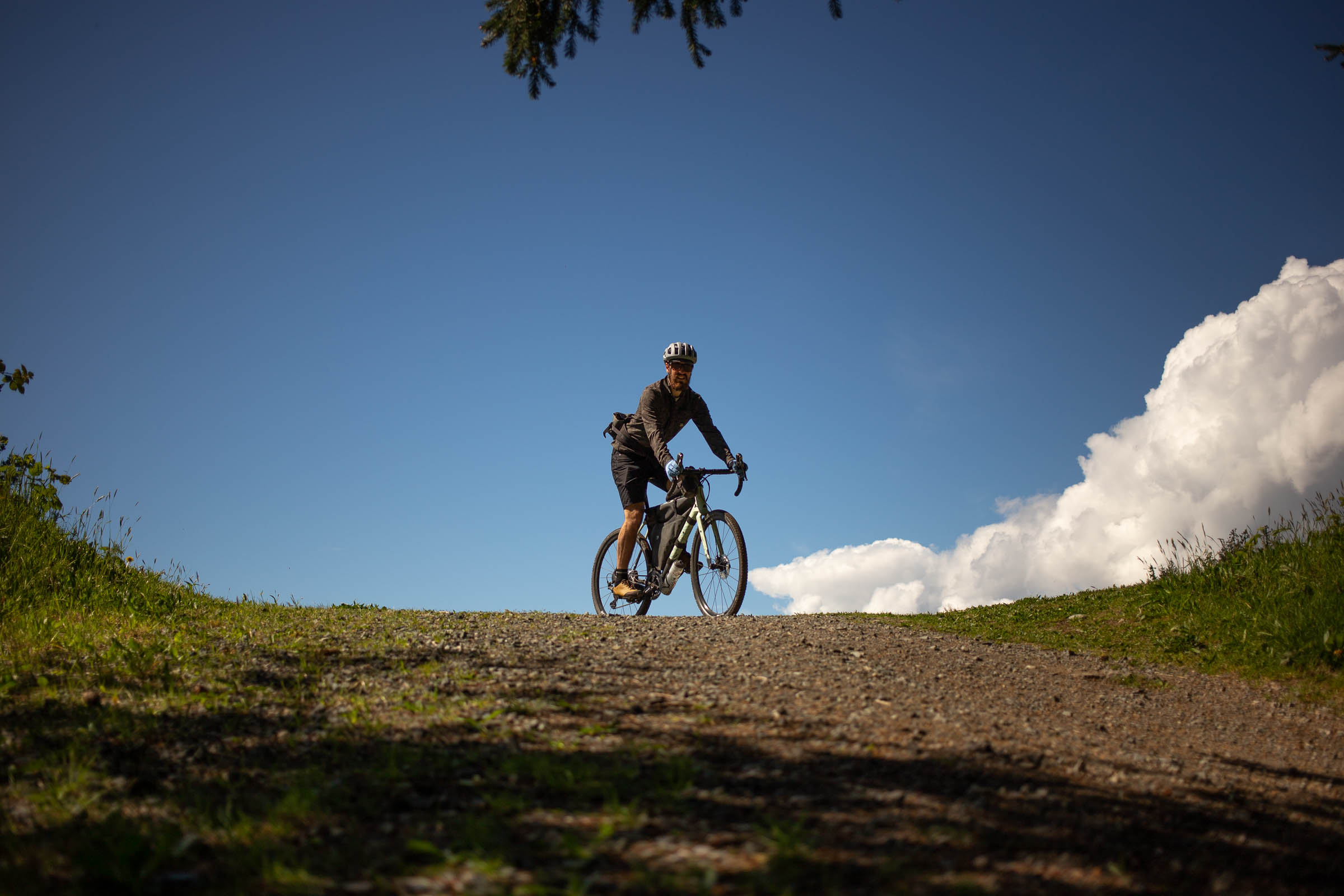
Please keep the conversation civil, constructive, and inclusive, or your comment will be removed.






